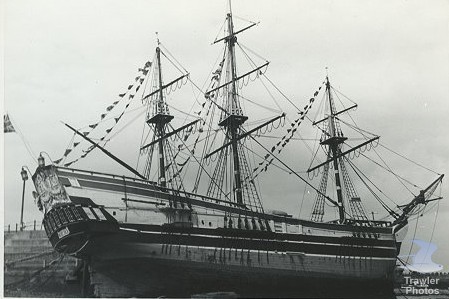Call me Ishmael....... So begins a book that I have never read and indeed was only vaguely aware of, but it's here that my little story begins. Well I suppose that's not quite right, because it actually started far less excitingly with me wondering what became of a ship! Little did I know that being a volunteer for Lancashire Archives could prove so thrilling! A simple ponder led me down a path that would uncover glamorous Hollywood credentials, with starring roles in films we would now know as Blockbusters.
I am, however, getting ahead of myself here, as my little story is not about Hollywood, but as I've said a ship! A ship by the name of Ryelands which I came across at Lancashire Archives. And wow, talk about picking at a thread and seeing it unravel! Head down and hard at it, my curiosity was peeked due to my spending two days transcribing names of the ship's crews, covering a period of several years, in which time the Master (Captain) was always one William Marrow. The crew came and went frequently; though there were several that did stay with the ship for quite a while. I felt that in some way, I had got to know these people and their ship. I had started in 1888 and by the time I got to the last crew list in 1914, I wanted to know what happened to the vessel following this.
As I've said in previous blogs, my curiosity often gets the better of me during my work and I end up 'off piste' looking down allsorts of historical avenues. This was to prove no different and I was swiftly on the case and established that the Ryelands was built in 1886 by Nicholson & Marsh at Glasson Dock in Lancaster. Despite a fire during her construction she first set sail on January 11th 1887 under Captain William Marrow's direction. The Ryelands continued for the next 50 years plying trade in home waters and occasionally internationally until after the Second World War, when following a brief stint working in the Bristol Channel, under the command of Kenneth Shaw, the ship was sold in 1948 to RKO Pictures. It was now that the glamorous Hollywood chapter of the ship's life was to start.
First came Treasure Island in 1950, which starred Bobby Driscoll as Jim Hawkins and Robert Newton as Long John Silver. The film, made by Disney Studios was a take on the 1883 book by Robert Louis Stevenson and filmed almost entirely at Denham Film Studios in England; however, the Ryelands stood in for the book's ship, The Hispaniola where much of the outside shipboard scenes were filmed.
One might think that one silver screen outing would be sufficient for the Ryelands, but no, more was to come. Following its sale to Elstree Studios she was to play the lead role (along with a whale and a famous actor) in a film which we would now know as a Blockbuster! The movie in question is of course Moby Dick released in 1956 and based on the book by American novelist Herman Melville, first published in 1851. It relates the story of a great white whale (of the title name) and an obsessed Captain Ahab, played by none other than the then Hollywood superstar, Gregory Peck. The Ryelands was very much front and centre as the book's ship - The Pequod, although thankfully a small model was used as a stand in for the scene where Moby Dick destroys the vessel.
Next up for the now accomplished marine actor was The Buccaneers, a made for TV series by ITC Entertainment and networked in the USA by CBS. The show, filmed in 1956 and 1957, starred a young Robert Shaw as Dan Tempest in command of his ship The Sultana and was an early children's TV offering on the then infant ITV networks in the UK.
Sadly like many silver screen sirens, Ryelands career in front of the cameras faded away and she became a floating exhibit in Morecambe, England, where unfortunately she was destroyed by fire in 1972. And so my little story comes to an end and perhaps Herman Melville's prose from the last line of Moby Dick would be fitting:
Now small fowls flew screaming over the yet yawning gulf; a sullen white surf beat against its steep sides; then all collapsed, and the great shroud of the sea rolled on as it rolled five thousand years ago.


